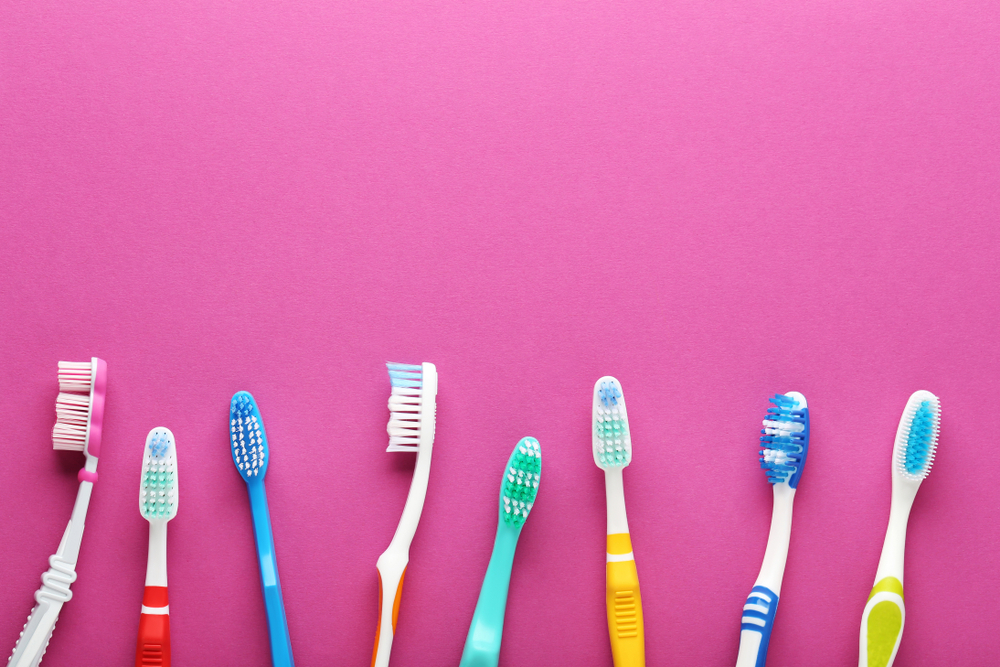Oral infections are caused by exposure to bacteria. And sometimes they get into the mouth through the toothbrush! However, there are simple gestures to help you avoid it.
1/6 Rinse it with hot water
According to a Korean study, the number of bacteria on the toothbrush decreases significantly when using hot water to rinse it instead of using cold water.
- And if you soak it in water for 5 minutes. Another study published in the Indian Journal of Microbiology Research showed that soaking your toothbrush for 5 minutes in hot water kills 50% of its bacteria.
2/6 Don’t touch other brushes
Many people use any glass to store them, but a group of scientists in India found that when the brushes of different people contact, the number of bacteria skyrockets.
- Use a specific glass for brushes. According to scientists, they include a lid with holes that allow the meetings to be stored without touching each other, which guarantees minor bacterial contamination.
3/6 Put it in a place where the sun touches it
A group of researchers found that brushes stored in sunny places did not contain the bacterium S. Mutans (which contributes to dental caries).
- And better … in a window. Specifically, according to the study, placing it on a sunny window sill is the most effective in killing bacteria.
4/6 Disinfect it … with salt!
If, after using the toothbrush, you immerse it in a glass of water with a tablespoon of salt for a few minutes, you eliminate 30% of the bacteria from the brush, suggests other research.
- And also, before the first use … Some dentists recommend soaking it in this preparation before using it for the first time.
5/6 You should change it every 3 weeks
A group of experts advises after conducting research published in the Journal of Natural Science, Biology and Medicine.
- If you wait 3 months to change it (which is what specialists used to advise), the brush already has significant bacterial contamination, these scientists say.
6/6 Do not leave it horizontal
If the brush remains in damp places or spreads out in contact with a wet brush, it isn’t easy to dry completely.
- This humidity facilitates the proliferation of bacteria in it. Research has confirmed that storing it in an upright position is the best way to dry it well and prevent bacterial growth.
OTHER HABITS THAT ELIMINATE BACTERIA
Proper brush washing not only eliminates bacteria, but it is also essential to remove all traces of toothpaste on it.
And why is this important? Because toothpaste often contains triclosan, a chemical used as a preservative and “suspected” of affecting health.
- Is it dangerous? The European Union does not allow adding more than 0.3% to toothpaste because it is suspected that in excess, it can be harmful to both health and the environment.
- And if it is regulated … why should it be removed from the brush? As researched by the University of Massachusetts (USA), triclosan can accumulate in the bristles of toothbrushes, and that can multiply our exposure to this chemical by 7.
This is how triclosan could affect.
Although there are no conclusive studies on the risks of continued exposure to this substance, its use in personal hygiene products has been questioned for years.
- More bacterial resistance. Triclosan is an antibacterial, and being continuously exposed to any antibiotic substance can make some bacteria more resistant.
- What if it alters hormones? Some studies have suggested that there is a relationship between exposure to this chemical and endocrine disturbances.
The Scientific Committee on Consumer Safety (CCSC) says that there is no evidence that this can occur with this chemical, although it also warns that the opposite is not proven either.
Tips to prevent build-up on the brush
In addition to washing the brush well after use and changing it periodically (if it has crooked or worn bristles, it is essential to discard it) to avoid accumulating this chemical in it …
- Choose toothpaste without triclosan. Some brands sell toothpaste in which this preservative is replaced by vitamin B 5 or xylitol.
- And if you do use them, don’t go overboard with the amount. A little toothpaste the size of a small bean is enough (it is not necessary to cover all the bristles of the brush), and it will be easier for you to remove the excesses.
- Do not abuse the pastes against infection. Most contain triclosan, and although they indeed kill the bacteria that cause gum disease, that does not mean that they cure the disease ( gingivitis or periodontitis ). If your gums are inflamed, you better go to the dentist.



